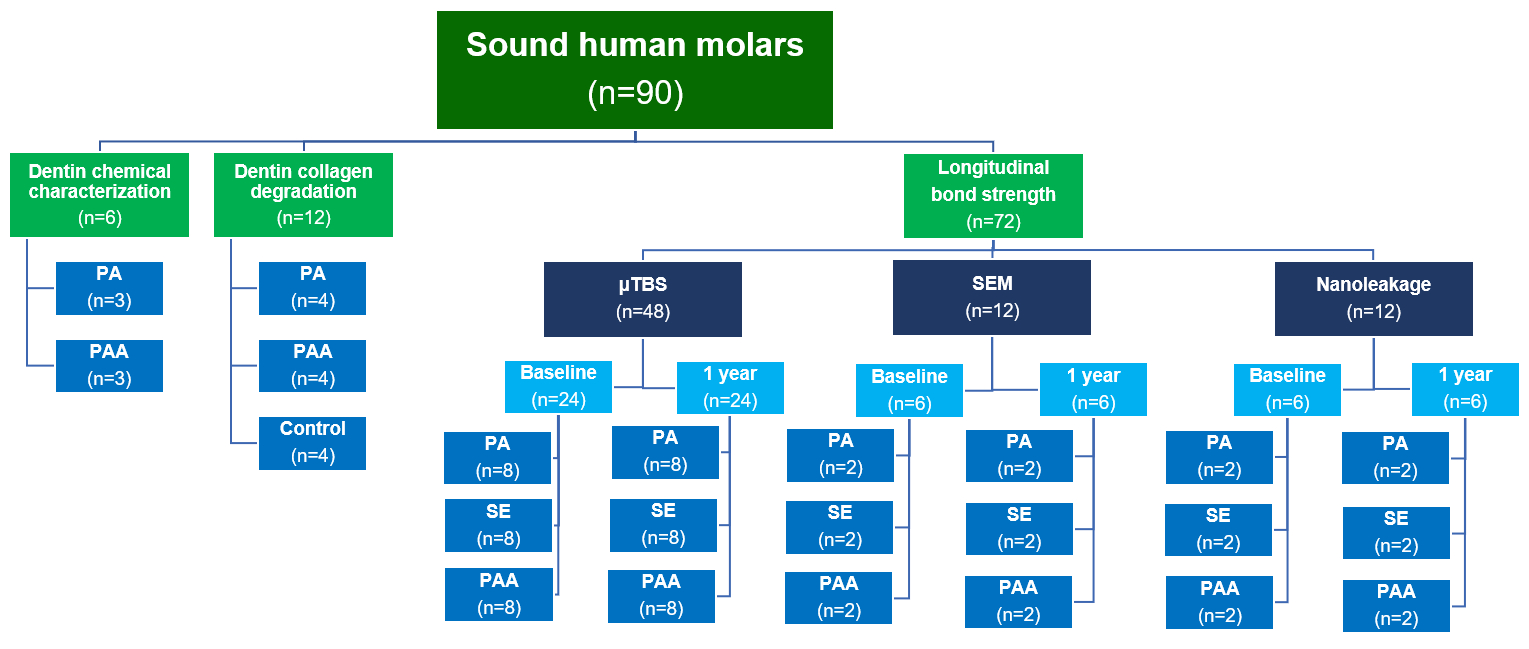Longitudinal bond strength of a universal adhesive and chemical dentin characterization under different acid etching protocols
DOI:
https://doi.org/10.1590/1678-7757-2023-0359Keywords:
Dentin, Acid etching, Adhesives, Matrix metalloproteinases, CollagenAbstract
This study aimed to analyze the longitudinal bond strength of a universal adhesive and chemically characterize the dentin substrate under different acid etching protocols. Methodology: Dentin samples were etched with polyacrylic acid 25% (PAA) for 10 seconds (n=3) and phosphoric acid 32% (PA) for 15 seconds (n=3) and analyzed by Fourier transform infrared spectroscopy – attenuated total reflectance (FTIR-ATR) before and after treatment. For collagen degradation, samples (n=12) were divided into 3 groups: PAA, PA, and Deionized water (control), and analyzed by the quantity of solubilized type I collagen C-terminal cross-linked telopeptides and solubilized C-terminal peptide in relation to total protein concentration (ICTPtp and CTXtp) and by their ultimate tensile strength (UTS). For the adhesive interface analysis, dentin samples (n=72) were divided into 3 groups: PAA, PA, and Self-etch (SE), and subdivided into 2 groups: 24 h (baseline) and 1 year. The following tests were performed: microtensile bond strength (μTBS) (n=48), scanning electron microscopy (SEM) (n=12), and nanoleakage (n=12). Results: The FTIR of PAA showed lower reduction of the peaks in the phosphate group when compared to PA. For ICTPtp, PA showed a significantly higher value. For CTXtp, PA and PAA groups failed to statically differ from each other. UTS was significantly lower for PA. For μTBS, storage time significantly affected bond strength. The results were unaffected by the etching protocol. For SEM, after 1 year, PA had little evidence of degradation in the upper third of the adhesive interface in comparison to the other groups. Nanoleakage showed no considerable silver impregnation after 1 year in the SE group. Conclusion: The use of PAA prior to a universal adhesive (when compared to PA) represents a less aggressive type of etching to dentin. However, self-etching still seems to be the best option for universal adhesive systems that have functional monomers in their composition.
Downloads

Downloads
Published
Issue
Section
License
Copyright (c) 2024 Journal of Applied Oral Science

This work is licensed under a Creative Commons Attribution 4.0 International License.
Todo o conteúdo do periódico, exceto onde está identificado, está licenciado sob uma Licença Creative Commons do tipo atribuição CC-BY.

